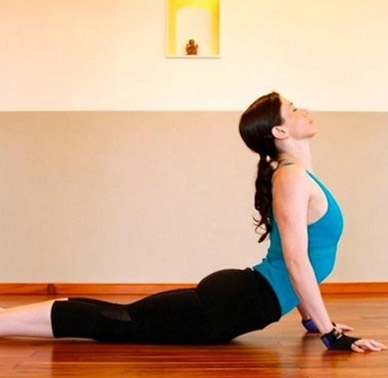
The Yoga Sutras, or Patajali's Yoga Sutras, are a collection 196 Sanskrit texts. The texts were compiled in the early centuries CE by sage Patanjali, who synthesised the wisdom of the older traditions on yoga. Although initially a work in process, the sutras are now considered to be one of the best sources of information for yoga practice.
The Yoga Sutras are comprised of four chapters. The first chapter focuses on enlightenment. Four chapters follow that discuss the journey to the goal. The 52 sutras provide information on the benefits of meditation and kriyas. The 54/55 sutras detail Ashtanga and Karma yoga. The benefits of regular meditation are explained in the last two sutras.
Patanjali's Yoga Sutras are considered the foundational text of yoga, and contain 196 short verses that are the basis of the practice of yoga. Although the sutras are thought to have been written around 400 B.C., many scholars believe that Patanjali did not invent yoga. Instead, he was a great presenter of the art. The sutras can be divided into five levels or padas.
Samadhi, the eighth limb, is it. This is the highest form of yoga. It is the most important. The Sutras define nirbijasamadhi as "seedless contemplation" or when the mind and body are separated from the spirit. This means that the mind is free, and there is no longer any ego or matter.

Yoga is spiritual practice. The Yoga Sutras are the foundation for it. It involves following the principles of Nature. The three elements of nature are: sattva; rajasa; and tamasva. The sattva Yama is the first and greatest, but it can also be the most difficult. Although it is difficult to grasp the purpose of the three others, ahimsa is the most important of all the four.
The Yama and Niyama sections are the three parts of the first book of Yoga Sutras. The first book is a biography on Patanjali. It's a biography and life story of the famous yogi. The yoga sutras (which are the most significant) are contained in the second book. The books also contain information about the history of yoga. The sutras contain detailed discussions of the history and origins of the practice.
The original text of the Sutras are divided into four sections, the Mahabhashya and the Pranayama. The Mahabhashya chapter is the third and most important. It covers the theory and practice, as well as the various stages of awakening. The fourth chapter deals with Panini's defense.
The Yoga Sutras, which are Patanjali's most beloved part of the Patanjali-inspired text, are found in the second half. Although the words are in the Sanskrit language, the meaning of the Sanskrit word sutra is "thread". The Sutras make up part of Hindu Scripture. It is the foundation for yoga. It was composed between 250 BCE and early centuries in the first millennium.
Yoga Sutras are complex, dense, and complicated in terms both of language and content. It is highly recommended that you have a commentary on Yoga sutras because of their difficulty. But it is not an essential part of the Yoga sutras. The translations of Yoga sutras are subject to some debate, but the core of the book is the text. Some versions of the book use the word "asana" to refer to a single posture, while others have different versions of the same phrase.

The Yoga Philosophy Sutras from Patanjali are widely considered to be the most fundamental yogic text. Studying the Sutras is a great way to learn ancient techniques and practice yoga in the modern age. These Sutras are relevant to modern yoga. It's up to you to decide how you want to use the Yoga Sutras. There are many benefits to learning the Yoga Philosophy from Patanjali.
The vast majority of sacred texts contain Patanjali’s insights. His writings detail the eight limbs in yoga, the five types and qualities of yogi brains, as well the five types. These Sutras are a great source of inspiration for modern yogis, and should be read and studied. This book will explain the basic principles and practices of Yoga.
FAQ
Do Men Need A Gym Membership?
Men do not need a gym membership. If you sign up for a gym, however, your money will be much more valuable.
Most gyms offer free trial memberships, allowing you to try out the facilities before paying any fees.
You can use the gym at any time you want, and it doesn't cost anything. Your membership can be cancelled at any time you choose to love it or not.
What Is The Best Way To Lose Weight?
It is not easy to lose weight. Many people give in to temptation because they don't know how to proceed.
You can lose weight by following a few simple steps.
First, make sure you eat less calories than you burn. If you eat more calories that you burn, you'll gain weight.
The second is to get regular exercise in order burn those calories. You can choose from a variety of exercises such as walking, biking or dancing.
Third, you need to stop drinking alcohol and smoking cigarettes. These habits lead to a higher intake of calories than usual.
Fourth, reduce your intake of fatty and processed foods. You can replace them by healthier choices such as fruits, vegetables or lean meats.
Fifth, change your lifestyle. You might need to get up earlier every morning to do some exercise before going to work.
Sixth: You must be disciplined, and you must follow your diet plan.
To burn extra calories, you can also join a gym or take an aerobics class.
These simple tips will help you quickly see results.
How many calories per day should I consume?
It varies from one person to another. The average is 2000 - 2500 calories per day. Based on your age, gender, height and activity level, you will need to calculate how many calories you require.
Statistics
- Are You One of the 20% of Guys (mh.co.za)
- An estimated calorie range for moderately active adult males falls between 2,200 to 2,800 calories per day, depending on age. (eatright.org)
- Get free shipping and 25% off today. (healthline.com)
- Cardmembers earn 5% Back at Amazon.com with a Prime Credit Card. (amazon.com)
- 10 pounds in a month is likely during a lean bulking phase, especially for beginners. (muscleandstrength.com)
External Links
How To
What nutrients does a person need every day?
Men require daily nutrition for healthy growth and development. The body needs vitamins, minerals as well as proteins, carbohydrates and fats.
Males also require specific nutrients at certain times of the day. When you're sleeping, your body uses energy from food for hormones, proteins, and enzymes. Protein is needed to build muscles and repair tissue damaged when you wake up.
Your body uses the night to break down fat and store extra energy as glucose. During this time, your body needs fewer calories but still needs sufficient nutrients. You can have a snack at night if you feel hungry.
You need to eat enough carbs and protein when you exercise. If you train hard, you may experience muscle soreness after exercising.
To prevent this, you should eat carbs as well as protein within the first two hours after training. To get energy from glucose, your body will start to degrade stored glycogen.
You must also eat protein right after you finish your workouts. This will prevent muscle tissue from being damaged while you sleep.
Lactic acid is produced by the body during periods of intense exercise. Your body can build up lactic acid in the bloodstream which causes fatigue. Eat foods high in carbohydrate, such as fruits, vegetables, to avoid this.
Carbohydrates can give your body the energy it requires to recover from intense exercise.
You may also want to include lean meats and fish, as well as yogurt, cheese, yogurt, beans and nuts in your diet.
All of these foods have high-quality protein. Protein promotes muscle growth and repairs damaged tissues. It provides amino acids that your body needs in order to produce sexhormones and testosterone.
You also need enough dietary fats to maintain good skin, hair, nails, and joints. Healthy men require between 20% and 35% of total caloric intake from fat.
Fat helps keep your heart strong and protects against cancer. It helps keep your brain working properly.
Vegetable oils such as sunflower oil and soybean oil can provide most of your fat needs.
These oils are high in monounsaturated fatty acids (MUFAs). MUFAs help lower cholesterol and reduce inflammation. They protect cells against damage from free radicals.
Saturated fats (SFAs) are found mostly in animal products like meat, dairy products, and butter. SFAs can increase LDL ("bad") cholesterol as well as triglycerides. They promote weight gain and abdominal fat.
Polyunsaturated oil (PUFAs), which are plant-based, can be found in vegetable oils, nuts seeds, grains, and other plant-based products. PUFAs reduce inflammation and improve cardiovascular function. They also help control blood sugar and cholesterol.
Low HDL ("good") cholesterol can lead to erectile problems in men. High consumption of saturated fats increases bad cholesterol, which lowers the level of good cholesterol.
Men who eat a lot of red meat or pork develop prostate problems because they contain large amounts of nitrates. When heated, nitrates are converted to nitrosamines. These compounds can cause cancer.
Most processed meats contain nitrites or other harmful chemicals. They should be avoided.
The American Heart Association recommends eating no more than 2 servings of red meat per week. Instead, opt for poultry, fish, legumes and tofu as well as whole grains bread and cereals.